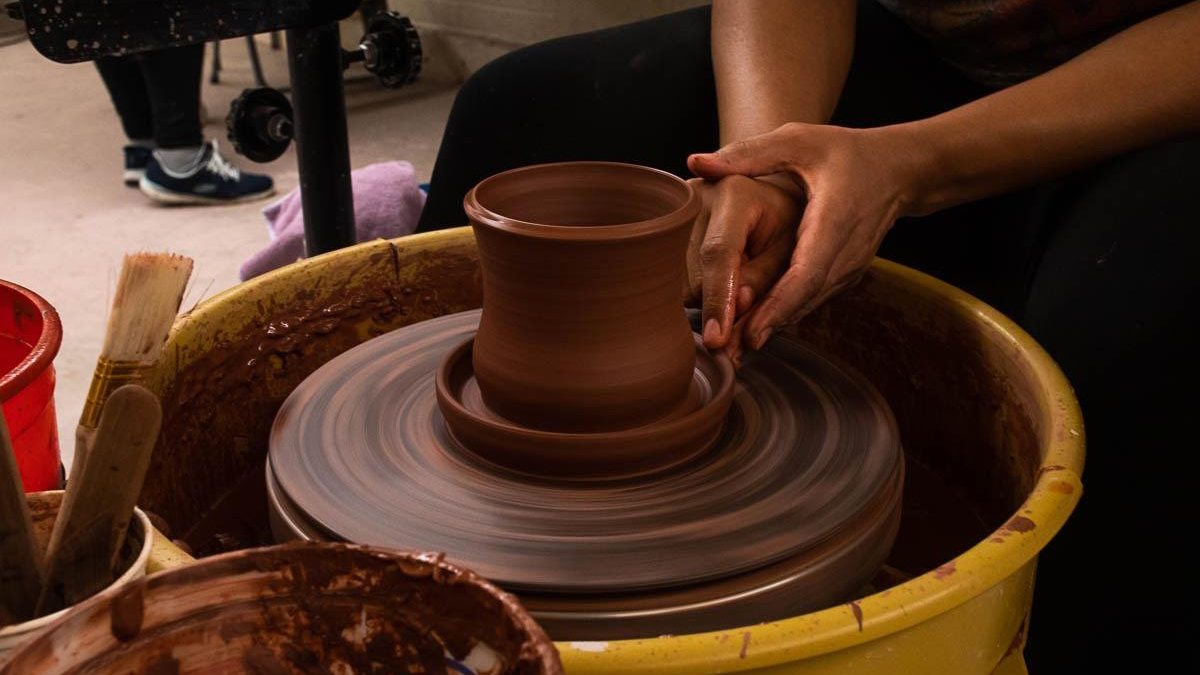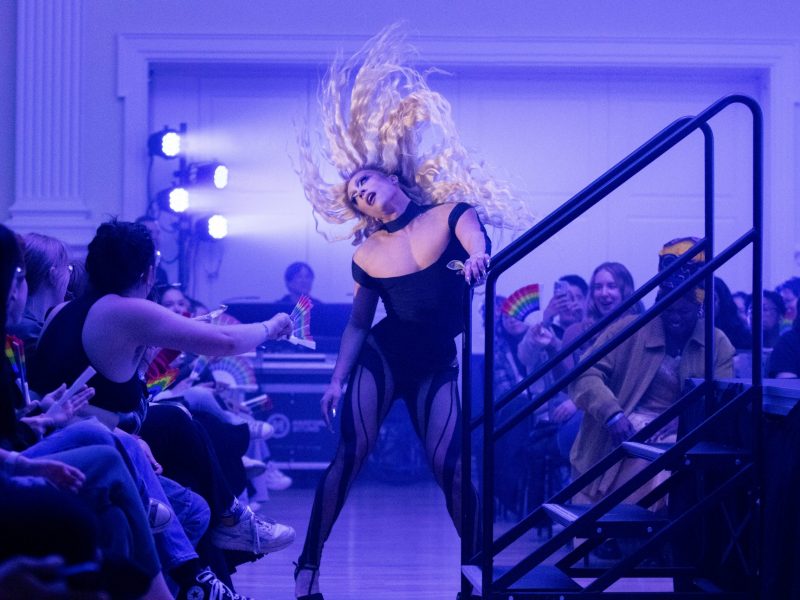Studio A, in the basement of Stamp, is an unassuming little space — but enter through the glass doors, and you’ll find an art sanctuary. Complete with a darkroom, kiln and a shared space for dance classes, the area is a nexus for those looking for creative inspiration and an escape.
This semester, they’ll enter the space through Zoom links and reserved time slots in order to accommodate social distancing protocols. But that doesn’t put a cap on creativity; staff are working diligently this semester to make sure Studio A remains a place that students can rely on for all their artistic needs.
Tara Youngborg manages Studio A and the Stamp Gallery at this university. During a normal semester, Youngborg works with instructors, undergraduate and graduate staff, and technicians to put together a schedule of art classes, which include acrylic painting, pottery, mixed media and self-portrait. There’s a lot to manage — a lot of “drawing people together,” Youngborg said.
In the absence of that physical togetherness, Youngborg has continued to think up ways to get people involved in the studio’s offerings.
Studio A offers a free monthly workshop, usually on the second Wednesday of every month. They draw a modest turnout of about 10 to 25 people, both online and offline, Youngborg said.
But candle-making is always a smash hit. Last year, Studio A brought in about 200 people for the activity, over the course of three hours, Youngborg said. To accommodate social distancing, this year’s workshop was spread out over five hours amongst 75 people. The event required participants to RSVP, rather than simply drop in as they had done in the past.
“It’s just wild that we did 15 people an hour and we usually would have a significantly larger number,” Youngborg said.
[MICA workshop discusses using art as means of social change]
Studio A staff are also trying to make materials more accessible, so students can participate in activities that can no longer take place in the studio. In September, they offered “DIY Dorm Decor kits” that students could pick up over the space of a week and a half. Kits included a picture frame, paints, glue, a brush and “embellishments” — all the ingredients for a DIY picture frame. More than 100 people showed up to claim kits.
Youngborg said they planned to offer more kits like these. For Homecoming — Oct. 26 to Oct. 30 — the studio will be offering “spirit boxes” full of UMD-themed goodies, such as a coloring book, a beaded turtle keychain craft and Play-Doh. Students will have the opportunity to collect the boxes on a first-come, first-serve basis.
In addition to grab-and-go crafts, Studio A is still offering online and limited in-person classes. A former computer lab has been converted into a ceramics studio for hand-building and glazing so a few more students can work on their projects in person, either during class or individual studio time. The two ceramics rooms have a total capacity of five people; the darkroom has a capacity of one.
Camila Tapia-Guilliams is an instructor for the acrylic painting and mixed media classes. They have been teaching at Studio A since last fall, and although they said the online format can feel disconnected and inorganic, smaller class sizes make for a more fluid experience.
“We’re able to talk just fine,” they said.
Tapia-Guilliams, who graduated last spring with a degree in studio art, also noticed that students are more willing to critique classmates’ artwork over Zoom.
“I’ll be offering my feedback and then someone types in the chat, ‘Wow, that looks amazing,’ or they’ll just say what they’re thinking without me having to prompt it,” Tapia-Guilliams said. “So in that way, it’s more collaborative.”
As for other online classes, Studio A continues to host free Wednesday workshops, with activities such as Zentangles, blackout poetry and salsa class. Youngborg said these activities don’t require artistic skill. Rather, they’re a good way to get out of your head — to zen out of your tangle, as it were.
And you can do them from anywhere, with anything. Blackout poetry is a type of “found poetry”; the only required material is a printed paper from a magazine, newspaper or any old pamphlet— whatever’s lying around. In order to make a blackout poem, you cross out all but the words that appeal to you, and arrange the remaining words into an order of your choosing. When Youngborg sat in on a recent workshop, she made a poem using a page from a copy of The Diamondback.
[What your dream Le Creuset item says about you]
Chidinma Opaigbeogu teaches the blackout poetry class — she said only two people attended last week’s online workshop.
“Not a lot of people know about Studio A in general,” she said.
Opaigbeogu, a senior English major, said that along with hosting writing workshops at Studio A, she has also attended classes. In September, she participated in a guided paint session taught by a friend. No longer responsible for instructing, she was free to play around.
“I feel like every time I’m painting it’s a moment to take your mind off of things,” Opaigbeogu said.
Youngborg said that kind of relaxed art-making has value beyond the canvas.
“The repetitive physical motion, it gets you out of your head,” she said. “It’s been scientifically proven that it’s good for your mental health to do art, even if you’re bad at it,” Youngborg said.
Youngborg could be right; in a time when mental health resources are a precious and rare commodity, art can be an outlet.
“Gosh, I think it’s so important,” Youngborg said. “So key.”
CORRECTION: Due to a reporting error, a previous version of this article used the incorrect pronouns for Camila Tapia-Guilliams. Tapia-Guilliams uses they/them pronouns in writing. This story has been updated.



